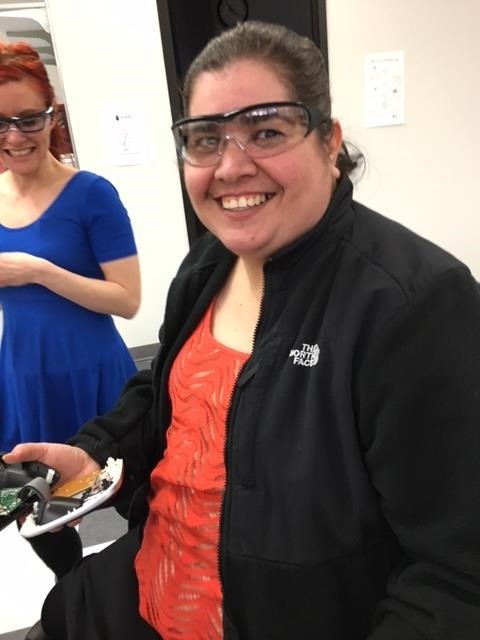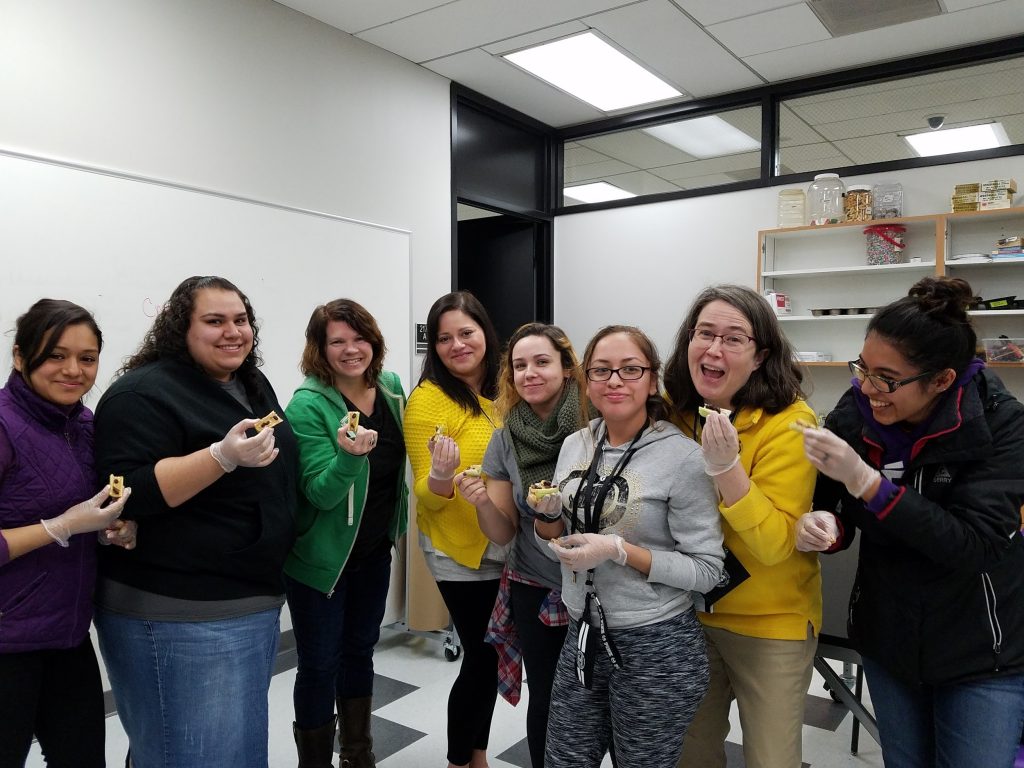Joyous Math
posted by Leslie Layman
What’s your favorite childhood math memory? It might sound like an odd question, but you can probably think of your favorite book or your favorite school experience. Math should be just a fun and joyful as the telling of a good story or a scientific inquiry activity. I often find that my Early Childhood education students struggle with supporting children to enjoy math because they have limited experiences of enjoying it themselves.
What Makes Learning Experiences Joyful?
Returning to the National Association for the Education of Young Children’s Position Statement on Developmentally Appropriate Practice, we can remind ourselves that children (and I would argue, people) learn best when:
Their learning is tied to personally meaningful experiences:

Child Development Creative Activities Students recreate a Starbucks; a very meaningful experience for them.
This always makes me think of a student of mine that excelled in my Science & Math for Young children course. During a group reflection, she shared that as a child she had worked selling groceries with her parents in a market in Mexico. Her job was to be in charge of the abacus and to make sure that customers receive the correct change. Since then she has thought of herself as a math person. This experience was so powerful because she used math in a meaningful way that made her feel important, competent, and tied to her family.
We can create such experiences for young children in our care. We can give children duties that include math such as counting the materials for snack, reporting how many fruits they bought at the grocery story with their family, or measuring the space to install a new toy into the classroom. An important aspect of this is that we must make families feel included in their child’s math education. Family newsletters, activity nights, and take home activities should include information about math concepts being covered and fun ways to integrate them at home.
Much of their learning is wrapped within the context of play:

Myself and a student who was anxious about teaching math enjoying breaking open an old phone to see what is inside.
It may seem intuitive to add a sign-up sheet to a preferred activity into the classroom to incorporate meaningful writing into play activities. Early childhood environment should include just as many ways to incorporate math skills into play. Graph paper can be added to the block area to support awareness of measurement and geometry. Imagine the children building a city on a grid with measured street systems! One of my favorite ideas comes from one of my student and that is to add tracing paper to diverse areas around the classroom so that children may trace the items they find interesting and then compare them.
Children’s learning experiences are social:
 Child Development Health, Safety, and Nutrition students connect with each other through planning, making, and enjoying a meal together.
Child Development Health, Safety, and Nutrition students connect with each other through planning, making, and enjoying a meal together.
There are two components to the importance of social learning. One is the adult expert whose job it is to scaffold learning. Children look to you as the sources of information and also as the lens through which to focus the emotional component of their emotions. When doing math related activities, you must also be having fun! The children will feel your anxiety, disinterest, and fear, but they will also feel your passion, joy, and confidence. This is especially true if you are match for your children in gender, sex, race, or ethnicity; as children may see you as an example of what they are capable of. If you are struggling to enjoy math with the children in your care, I encourage you to find professional development that supports you, meet with a teacher who loves math, find a math book you love, or explore the math in an activity you excel in maybe art or science.
The second component of social learning is that children learn many of their skills through positive interactions with peers. Children are serious engineers, mathematicians, and scientists. Give them real, math related puzzles to solve collaboratively. This box is too heavy to lift, how will we get it to the other side of our classroom? We need a new rug, how will we know how big it should be? We are having a party, how will we know how many invitations to make? This also comes from integrating real math tools into existing play areas. Include graph paper, measurement tools, light tables, tracing paper, an abacus, a cash register into your play areas and watch children make up their own math during dramatic play.
Final Thoughts
I will leave you with the same conclusion that I use with my students. Early childhood professionals are often children and families first window into the outside world. They are also their first experience with education and educational facilities. The most important task that we have is to make those first experiences manageable, safe, and enjoyable. The memory of early learning experiences will color the way that children and families think of themselves as learners and the way that they perceive school. There is no greater gift that we can give them than confidence and hope.
Very neat! Liked the blog!
math really is everywhere. it is great to incorperate it into the children play
Neat blog! Thanks for the fun ideas, tips, and challenges.
Math is a very important part of learning. Children learn in different ways through math.
great blog, thanks for the ideas
Great idea, Making math fun and memorable.
Good ideas to introduce math to children.
I liked the focus on having fun. So many children look upon math with dread as their experiences have not been good. Starting early and making a personal, fun connection goes a long way to develop a positive outlook toward math.
Having fun while learning is great spending time and not money is a win win situation